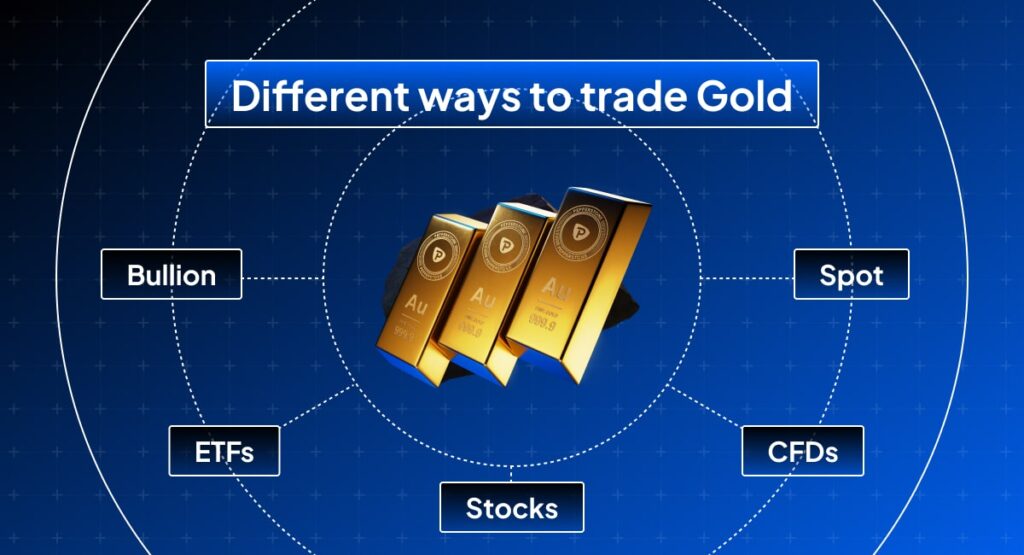

Gold has long been considered one of the most valuable and stable assets, often viewed as a haven during economic instability. However, like all commodities, the value of gold fluctuates based on various factors. Understanding what affects the current gold trading price is essential for investors looking to make informed decisions. In this guide, we’ll explore the primary factors influencing gold prices and provide insight into how these elements impact the market.
The supply of and demand for gold significantly impact the current gold trading price. Unlike other commodities, gold is not consumed in large quantities, meaning that most of the gold ever mined still exists in some form. This makes gold’s value heavily dependent on demand from investors, jewelry markets, and central banks.
When demand increases due to economic uncertainties, geopolitical tensions, or inflation, the price of gold typically rises as well. Conversely, when demand weakens, prices tend to drop. Mining production also affects supply but usually has a limited impact on price due to the relatively steady output.
Economic stability and growth can greatly affect the current gold trading price. During periods of economic expansion, investors may prefer riskier assets like stocks and bonds, leading to a potential decline in gold prices. However, during economic downturns, recessions, or inflationary periods, gold becomes more attractive as a store of value. This is why gold is often referred to as a “safe-haven” asset; when confidence in fiat currencies or other financial assets wanes, investors turn to gold, driving up its price.
Central banks play a crucial role here, as they hold gold as part of their reserves. When central banks in major economies, like the United States, increase their gold holdings, it can boost demand and raise prices. Additionally, central bank policies, such as interest rate changes, directly impact gold. Higher interest rates can make bonds and other assets more appealing, potentially decreasing the demand for gold.
One of the most significant factors affecting the current gold trading price is inflation. Historically, gold has been used to hedge against inflation because its value tends to rise as the purchasing power of fiat currencies declines. When inflation rates are high, the appeal of gold as a stable investment increases, and so does its price.
Currency fluctuations, particularly in the U.S. dollar, also influence gold prices. Since gold is globally traded in dollars, a strong U.S. dollar can make gold more expensive for international buyers, reducing demand and potentially lowering prices. Conversely, when the dollar weakens, gold becomes cheaper for foreign investors, often leading to an increase in demand and prices.
Gold prices are highly sensitive to geopolitical events and crises. Conflicts, trade wars, and global political uncertainty can create instability in financial markets, prompting investors to seek safer investment options. This “flight to safety” often benefits gold, pushing up its value. During times of geopolitical tension, such as wars or diplomatic standoffs, the demand for gold typically rises as investors look for ways to safeguard their assets.
For instance, when the COVID-19 pandemic caused global uncertainty, the current gold trading price surged as investors turned to gold to secure their wealth. Similar spikes in gold prices have been observed during other global crises, making geopolitical events a major determinant of gold’s market value.
Interest rates, particularly those set by central banks like the Federal Reserve, have a considerable impact on gold prices. When interest rates are high, gold is less attractive because it does not offer any yield, unlike interest-bearing assets like bonds. However, when interest rates are low, gold becomes more appealing as the opportunity cost of holding it decreases.
In recent years, low-interest-rate policies in major economies have supported the demand for gold, as investors seek alternative assets that can hold value in a low-yield environment. If interest rates are expected to rise, the demand for gold may fall, which could cause the current gold trading price to decrease.
Market speculation and trends also influence the price of gold. Investors’ attitudes toward gold can fluctuate, impacting demand and, therefore, its price. If gold is perceived as an undervalued asset, more investors may buy gold, driving up the price. Similarly, investment trends such as exchange-traded funds (ETFs) dedicated to gold can significantly impact its value. Gold-backed ETFs have become popular among investors who want exposure to gold without owning physical bullion, and these funds’ buying or selling activities can move the market.

In summary, several key factors influence the current gold trading price, including supply and demand, global economic conditions, inflation, geopolitical tensions, interest rates, and market trends. Each of these factors plays a role in the daily fluctuations and long-term trends of gold’s market value. For investors, staying informed about these variables can provide valuable insights into when to buy or sell gold.
With gold often acting as a safe-haven investment, understanding these influences can help investors make strategic choices. While the current gold trading price is subject to change, these factors will continue to be the primary drivers behind gold’s value in the marketplace.

A Look at Dubai Mall’s Most Talked-About Dining Spots in 2025

A Look at Dubai Mall’s Most Talked-About Dining Spots in 2025

The Confluence of Culinary Excellence and Casino Trends in the UAE


The Benefits of Hiring a Professional Clown for Children’s Parties


Near-Expiry Pantry & Sweets in Dubai: Big Savings on Everyday Essentials

كيف يمكنني اللعب في كازينو اون لاين بأمان؟

Ford Raptor 2025 in the UAE: Pricing, Power, and Desert Ready Capability

Behind Every Online Food Order in Dubai Is a Strong IT Support

A Look at Dubai Mall’s Most Talked-About Dining Spots in 2025

A Look at Dubai Mall’s Most Talked-About Dining Spots in 2025

The Confluence of Culinary Excellence and Casino Trends in the UAE